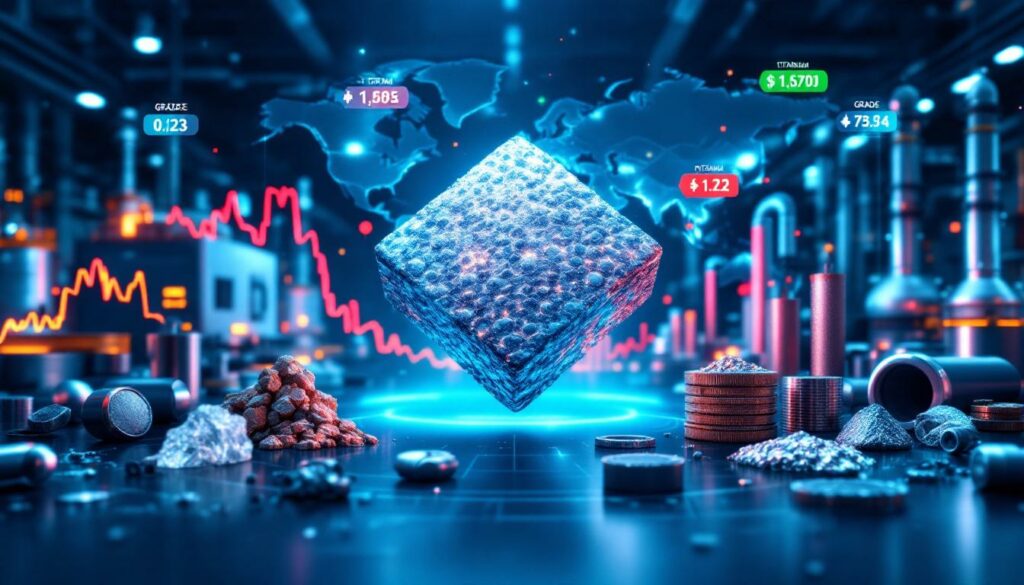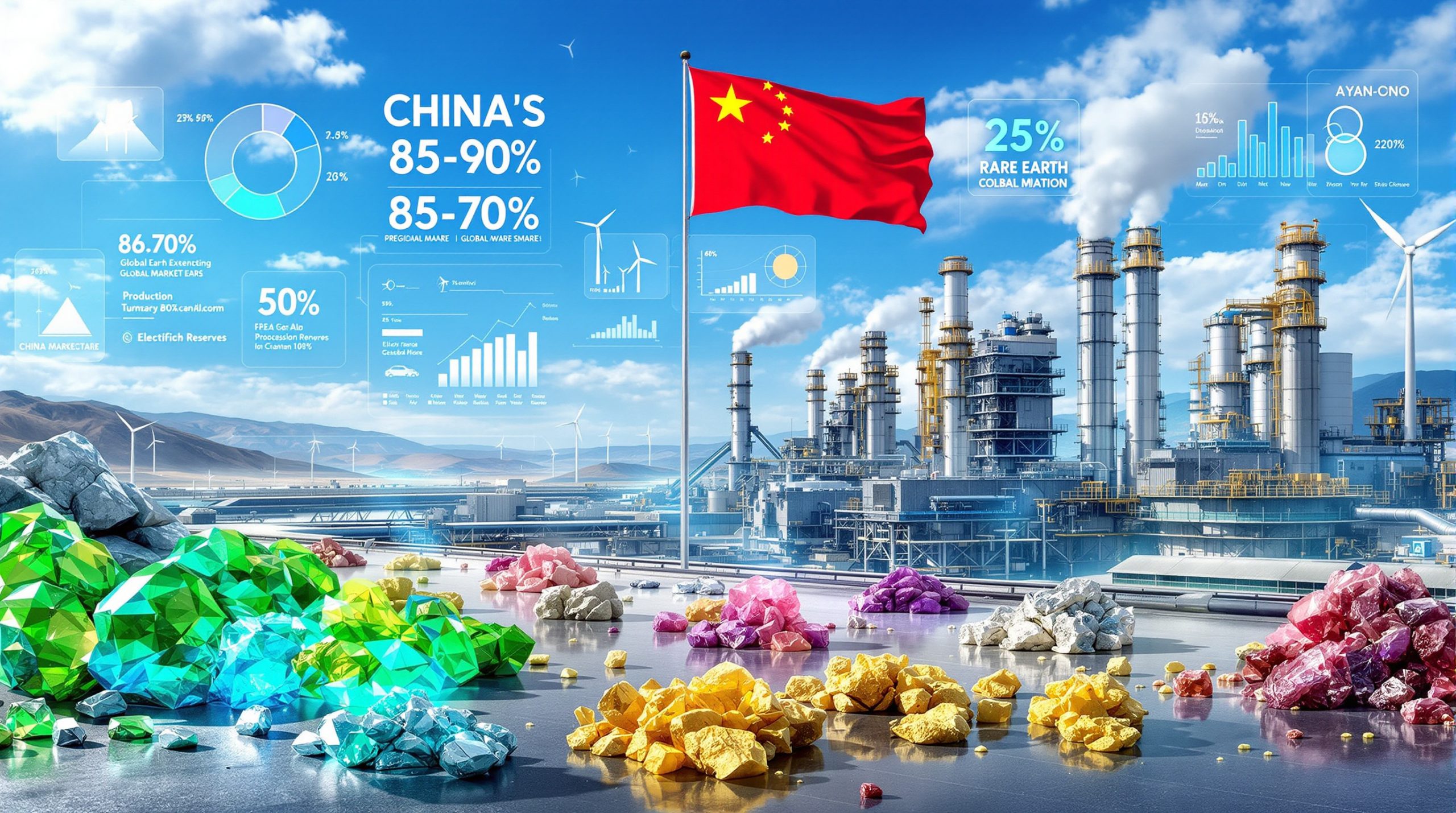Understanding Titanium Sponge Market Volatility: Current Pricing Dynamics and Future Trends
In the world of industrial metals, titanium sponge represents a critical raw material with applications spanning aerospace, chemical processing, and medical industries. Recent market developments have created a complex pricing environment that demands closer analysis for industry stakeholders.
Current Market Pricing Landscape
As of July 15, 2025, the titanium sponge market displays significant price stratification across quality grades, according to the latest Shanghai Metal Market (SMM) Titanium Spot Cargo Report:
- Grade 0 titanium sponge: Commanding premium prices at 53,500 yuan/mt
- Grade 1 titanium sponge: Trading at 50,500 yuan/mt
- Grade 2 titanium sponge: Available at 49,500 yuan/mt
Meanwhile, downstream titanium products show signs of weakening:
- Titanium pipes (TA2/25*2mm): 115-125 yuan/kg (representing a 5 yuan decrease)
- Pure titanium rods (TA1/20-40mm): 95-105 yuan/kg (also down 5 yuan)
This price disparity between raw titanium sponge and finished products creates a squeeze on processor margins that's becoming increasingly unsustainable for many market participants.
"The market generally believes that there is a certain degree of overvaluation at the current price level," notes SMM's latest market analysis, signaling potential corrections ahead.
The premium commanded by Grade 0 titanium sponge—approximately 4,000 yuan/mt higher than Grade 2—reflects its superior purity levels and suitability for mission-critical applications where material integrity cannot be compromised.
Supply-Side Factors Affecting Titanium Sponge Prices
The titanium sponge supply chain faces several structural constraints that contribute to price volatility:
Production Capacity Limitations
Titanium sponge production requires specialized facilities utilizing the Kroll process, which remains energy-intensive and technically demanding. The small number of global producers creates natural supply constraints when demand fluctuates.
Raw Material Dependencies
Production relies on:
- Titanium tetrachloride (TiCl₄)
- High-purity magnesium
- Specialized reduction vessels
Any disruption in these inputs can create ripple effects throughout the supply chain, potentially affecting final sponge availability and pricing.
Energy Cost Sensitivities
The energy-intensive nature of titanium sponge production means that energy price fluctuations can significantly impact production costs. Manufacturers must carefully balance production volumes against rising energy expenses to maintain profitability.
Why is the Titanium Material Market Experiencing Weakness?
Despite the high price of titanium sponge, the broader titanium materials market shows clear signs of weakening demand and downward price pressure in finished products.
Downstream Demand Challenges
According to the July 15, 2025 SMM report, several factors are contributing to market weakness:
-
Chemical Industry Slowdown: "Demand remained weak due to the drag from the chemical industry," with titanium equipment orders slowing significantly.
-
Reduced Purchasing Willingness: The report specifically cites "persistent low purchase willingness in the market" as buyers resist current price levels.
-
Divergent Price Trajectories: While sponge prices remain elevated, finished product prices continue falling (demonstrated by the 5 yuan/kg reduction in pipes and rods).
This demand weakness creates an unsustainable situation where raw material costs remain high while product prices trend downward, creating margin compression for titanium processors and fabricators.
Market Sentiment and Pricing Psychology
Market psychology plays a crucial role in the current titanium pricing dynamics:
Price Overvaluation Perception
The SMM report explicitly states that "the market generally believes that there is a certain degree of overvaluation at the current price level" for titanium sponge. This perception creates hesitation among buyers who anticipate potential price corrections.
Buyer Resistance Mechanisms
In response to high sponge prices, buyers are employing several strategies:
- Delaying non-essential purchases
- Drawing down existing inventory
- Exploring alternative materials where technically feasible
- Negotiating more flexible contract terms
Inventory Management Adjustments
Downstream fabricators appear to be operating with minimal inventory levels, purchasing only to fulfill immediate production requirements rather than building stock positions that might lose value in a price correction scenario.
How Might Titanium Sponge Prices Evolve in the Near Future?
The titanium sponge market stands at a potential inflection point, with several indicators suggesting price adjustments ahead.
Market Correction Scenarios
The SMM analysis predicts that "the price of titanium sponge may experience a rational correction" in coming market periods. This correction could manifest in several potential ways:
Gradual Price Normalization
The most likely scenario involves a gradual reduction in titanium sponge prices as:
- Chemical industry demand remains subdued
- Buyers continue to resist current price levels
- Inventory management strategies reduce immediate buying needs
Cost-Side Pressure Transmission
The report specifically mentions "cost-side pressure transmission" as a factor likely to influence future price movements. This suggests that the high production costs that initially drove prices upward may begin to moderate.
Supply-Demand Rebalancing
Any correction would likely represent a rebalancing toward a more sustainable equilibrium between:
- Producer profitability requirements
- End-user affordability thresholds
- Competitive positioning against alternative materials
Factors That Could Maintain High Prices
Despite correction predictions, several factors could potentially support continued high titanium sponge prices:
Supply Constraints
Any production disruptions, especially among major producers, could quickly reverse downward price momentum by creating real or perceived scarcity in the market.
Strategic Material Considerations
Titanium's critical importance in aerospace, defense, and high-performance industrial applications means that strategic stockpiling activities by governments or major industrial players could provide price support despite general market weakness.
Production Cost Floors
The significant energy, raw material, and capital costs involved in titanium sponge production establish effective price floors below which producers cannot operate profitably. This creates natural resistance to price declines beyond certain thresholds.
What Are the Implications for Different Industry Stakeholders?
The current titanium market dynamics create different challenges and opportunities across the value chain.
Impact on Titanium Processors and Fabricators
Titanium processors face particularly challenging conditions:
Margin Compression Challenges
With high input costs and weakening finished product prices, processors face significant margin pressure. This may force difficult decisions regarding:
- Production volumes
- Product mix optimization
- Cost-cutting initiatives
- Price negotiation strategies
Pricing Strategy Adjustments
Processors must carefully balance:
- Pass-through of higher raw material costs
- Market competitiveness
- Inventory valuation risks
- Long-term customer relationships
Alternative Material Evaluation
In some applications, sustained high titanium prices may accelerate the evaluation of alternative materials such as:
- High-performance stainless steels
- Nickel alloys
- Advanced composites
- Aluminum alloys with protective coatings
Strategic Considerations for End Users
End users of titanium products should consider several strategic approaches:
Inventory Management Recommendations
- Maintain minimal inventory positions until price trajectory becomes clearer
- Consider consignment arrangements with suppliers to reduce price risk
- Implement just-in-time procurement strategies where feasible
Contract Structuring Approaches
- Explore price adjustment mechanisms in longer-term contracts
- Consider risk-sharing arrangements with suppliers
- Evaluate index-based pricing models tied to recognized titanium benchmarks
Supply Security Enhancement
- Diversify supplier relationships to reduce dependency on single sources
- Develop relationships with secondary (recycled) titanium processors
- Evaluate backward integration opportunities for critical applications
How Does the Titanium Market Compare to Other Metal Markets?
Titanium displays several distinctive characteristics when compared to other industrial metals markets.
Cross-Metal Market Analysis
Performance Relative to Other Minor Metals
Unlike many other specialty metals that have seen more stable pricing, titanium sponge has experienced more significant volatility. This divergence reflects titanium's unique supply chain characteristics and end-use application mix.
Correlation with Major Industrial Metals
Titanium pricing typically shows:
- Lower correlation with general economic cycles than base metals
- More responsiveness to aerospace and defense sector dynamics
- Greater supply-side influence due to concentrated production
Unique Characteristics of Titanium Pricing
The titanium market features:
- Limited price transparency compared to exchange-traded metals
- Significant quality premiums across grades
- Strong regional pricing differences
- Greater influence of long-term contracts in price discovery
The understanding of iron ore trends and other metal price forecasts can provide valuable context for analyzing titanium market movements, as industrial metals often share certain market drivers despite their distinct supply chains.
FAQ About Titanium Sponge Pricing
What determines the quality grades of titanium sponge?
Titanium sponge grades are primarily differentiated by their impurity levels, particularly:
- Oxygen content: Lower oxygen levels indicate higher grade material
- Iron content: Strictly controlled in aerospace grades
- Nitrogen content: Critical for mechanical property consistency
- Carbon content: Affects weldability and corrosion resistance
Grade 0 titanium sponge has the lowest impurity levels, making it suitable for the most demanding aerospace and medical applications.
Why is titanium sponge production concentrated in few countries?
Production concentration results from several factors:
- Technical complexity: The Kroll process requires specialized expertise
- Capital intensity: Production facilities require substantial investment
- Energy requirements: High electricity consumption favors locations with affordable power
- Environmental considerations: Process generates wastes requiring careful management
- Strategic importance: Some nations maintain production for national security reasons
How do titanium sponge prices affect aerospace component costs?
The relationship between sponge prices and aerospace components involves:
- Material intensity: Aerospace components typically contain 30-70% titanium by weight
- Value addition: Processing and certification add substantial value beyond raw material costs
- Qualification requirements: Aerospace-grade material undergoes extensive testing, creating premium pricing
- Long production cycles: Price changes may take months to fully impact component costs
What alternatives exist when titanium sponge prices are too high?
Industries may consider several alternatives:
- Titanium scrap recycling: Secondary material often available at 30-40% discount to virgin sponge
- Material substitution: High-performance stainless steels or nickel alloys in less demanding applications
- Design optimization: Reducing titanium content through design improvements
- Process improvements: Additive manufacturing to reduce material waste
- Project postponement: Delaying non-critical projects until pricing normalizes
Future Outlook for the Titanium Sponge Market
Short-Term Market Projections
The immediate outlook suggests potential adjustments:
- Price correction likelihood: SMM analysis indicates "the price of titanium sponge may experience a rational correction in the future market."
- Demand recovery timeline: Chemical industry demand appears likely to remain subdued in the near term.
- Supply response predictions: Producers may adjust production volumes if prices decline significantly.
Long-Term Industry Transformation Factors
Looking beyond immediate market conditions, several factors will shape the titanium industry's future:
Emerging Production Technologies
Research continues into alternative titanium production methods that could potentially reduce costs and energy requirements, including:
- Direct reduction processes
- Electrochemical production methods
- Continuous production techniques
Changing Application Landscape
Titanium demand continues to evolve with:
- Expanding medical applications (implants, instruments)
- Growing industrial applications in aggressive environments
- Potential consumer product applications (premium goods)
- Emerging hydrogen economy opportunities (storage, electrolysis)
Sustainability Considerations
Environmental factors increasingly influence titanium production and use:
- Energy efficiency improvements in the Kroll process
- Closed-loop recycling systems for manufacturing scrap
- Life-cycle assessment considerations in material selection
- Carbon footprint reduction initiatives throughout the supply chain
The ongoing mining industry evolution will likely impact how titanium is produced and processed, while concerns about critical materials supply may elevate titanium's strategic importance. Furthermore, energy transition dynamics could create new demand patterns for titanium as renewable energy and storage technologies advance.
Disclaimer: Market forecasts and price predictions represent the analysis of market experts as reported by Shanghai Metal Market as of July 15, 2025. Actual market developments may differ from these projections. This information should not be construed as investment advice. Always consult with qualified financial and industry advisors before making significant business decisions based on commodity price forecasts.
Ready to Stay Ahead of the Next Major Mineral Discovery?
Don't miss out on significant ASX mineral discoveries and their market potential—Discovery Alert's proprietary Discovery IQ model delivers instant notifications on high-value opportunities across the metals sector. Explore why major discoveries can lead to substantial returns by visiting the Discovery Alert discoveries page and begin your 30-day free trial today.




